Reviews
Frederick Wiseman
USA, 1989
Credits
Review by Evan Kindley
Posted on 18 June 2008
Source Zipporah Films DVD
Categories Frederick Wiseman
Full disclosure: I grew up around Central Park, living the first eighteen years of my life in an apartment on 96th Street between Columbus and Central Park West, so I know the subject matter of Frederick Wiseman’s twenty-third film intimately. (Watching it, I spent a lot of time scanning the backgrounds of group scenes in search of my nine-year-old self, but no luck.) So inevitably there are plenty of images and details in the film that bring me back to the days of my childhood: remote-controlled toy boats zooming across a reflecting pool; a tiny child sitting on Hans Christian Andersen’s lap, staring into his enormous book; kids playing in the sprinkler at the 93rd Street playground. But what’s really remarkable, given that the film was shot 20 years ago, is how little has changed.1 Sure, a few details date the film: then-Mayor Ed Koch makes two cameo appearances (in the second he plows through a crowd with his hands raised to receive high-fives); there’s a predominance of Walkmen and boomboxes instead of iPods and laptops; we see logos designed by Keith Haring and the last remnants of much-maligned 80s fashion styles. But the basic activities Wiseman records are the same you’re likely to see taking place today: strolling, jogging, birdwatching, tennis, softball games, picnics, public displays of affection, park rangers on horseback, etc. What’s added or missing is not nearly so striking as what’s still there, and for those who’ve spent a significant amount of time in the park, the very continuity of it is comforting.
From its first moments, it’s clear that Central Park will be one of Wiseman’s most aesthetically beautiful films, indulging itself in attention to the relatively untended nature of its surroundings. Much of it is taken up with short, still, wordless tableaux, recording little human moments (a shirtless old man holding his nose; a woman leaning back and posing for a picture; senior citizens playing chess) against landscape compositions which often have the elegance of an eighteenth-century pastoral painting. This formal restraint on the level of the shot is important, too, because as a totality, at 176 minutes, Central Park is pretty messy. Dealing with a subject at once smaller (i.e. it’s a very specific place, not some all-embracing metonym like Meat or Missile) and much larger (480 acres) than those had previously taken on in his films, Central Park is unsurprisingly quite fragmented: the camera jumps around from one area of the park to the next, covering an extremely wide range of cultural, and natural, phenomena in the process. The result is a film that is generally funnier, lighter, and looser than much of Wiseman’s work, one that at times risks being merely shapeless. Especially in its early scenes, it has a spaced-out, anything-goes quality that one doesn’t associate with Wiseman’s films at all. Central Park, as a number of the film’s participants emphasize at different points, is designed as a “free open space for everybody,” and that unrestrictedness pretty much makes the kind of procedural thoroughness Wiseman is known for impossible. (This is not to say there aren’t typically Wisemanian touches: many brief, sobering shots of homeless people, for instance, or the juxtaposition of the spectacle of an open-air opera concert with the sight of a crew maintenance workers picking up after it.) Those unfamiliar with the park won’t get much of a sense of its geography: many obvious landmarks - Belvedere Castle, the Metropolitan Museum of Art, the Museum of Natural History, Strawberry Fields - are seen only briefly or not at all, while others - Bethesda Fountain, Sheep’s Meadow, the Alice in Wonderland statue - recur frequently and end up getting a great deal of screen time. (It seems to me that Wiseman displays a bias for the West Side over the East, which is fine with me.)
Because this is New York City - “a city that touches the world,” as one tourist puts it, or “the miracle of God’s eye,” in the words of Mayor Koch - the park is also traversed by various forms of legitimate culture, from an amateur Shakespeare acting class to a blues musician playing guitar with his teeth à la Jimi Hendrix to a performance by the late Luciano Pavarotti. There also seems to be an awful lot of filmmaking going on, in addition to Central Park itself: Francis Ford Coppola shooting his ill-fated segment of New York Stories beneath the arch at Bethesda Fountain; and even, in another Proustian moment for me, Levar Burton filming an episode of Reading Rainbow. Wiseman has fun with the park’s cultural eclecticism without overstating it: he takes care to show that the park is more than an entertainment venue or a kind of open-air museum, that it reflects its actual denizens as much as it does the city’s official self-image. In a rare moment of technical showiness, Wiseman layers a gentle polka over the old-school hip-hop of Doug E. Fresh and the Get Fresh Crew, getting their tempos to perfectly overlap.
Still, all this cultural activity should remind us that Central Park is more than just a recreational space for native New Yorkers: it’s also a tourist attraction, and a powerful symbol of the city’s international distinction. What’s perhaps surprising is the degree to which this preeminence is underwritten by private rather than public capital. In one of the more revealing administrative scenes, the director of fundraising for the Conservancy discusses her strategy for attracting wealthy donors: “You act like you’re like the Public Library, you act like you’re Lincoln Center, and the gifts become commensurate with the kind of posture you present publicly.” This leads into a discussion of donor recognition, which some worry could overwhelm the park’s aesthetics: “We don’t want the park to look like a graveyard, but the more you attract donors of significance, the more those donors expect some kind of recognition. While you may not have to recognize a gift from your thousand-dollar donor, you sure have to do something for your million-dollar donor. Unfortunately, we have more at that level than ever.” This provokes a little bemused laughter: “Unfortunately?” The final third of Central Park focuses more on these issues of financing, administration and regulation, often somewhat numbingly (a long section chronicling the political debates over the construction of a new tennis house probably has some historical interest, but not much beyond that); after these indoor scenes it’s always a relief to get back to the park. But they do point the way toward the increasing gentrification of the Upper West Side, and of the city in general, that is so evident two decades later.
A final aspect that renders the movie distinctly New York (well, distinctly Upper West Side of Manhattan, if you want to know the truth) is the conspicuous visibility of left-of-center political attitudes, to a degree that has markedly decreased since 1988. Some of these manifestations are noble and moving (parents educating their children about the AIDS quilt, for instance, or a later Gay and Lesbian Pride Parade), some not so much (an announcer for the L’eggs-sponsored mini-marathon calling out via bullhorn: “Who says women can’t run the world?”). Or take the film’s most dramatic sequence, which details the Parks Department’s decision not to allow attendants of a peace rally to sell t-shirts and other commodities without a permit, a ruling that provokes an absurd overreaction from a few disgruntled vendors (“I’m always reminded of the Nuremberg Trials where the Nazis said, ‘Hey, I was just doing my job!’”; “I never thought this would happen when I lived in this country! This is Russia! Where are the people for freedom in this country?”). Wiseman wryly juxtaposes these tirades with a performance by the Australian rock band Midnight Oil, whose performance of their song “Beds Are Burning,” in this context, comes across as a continuation of the vendors’ vaguely aggrieved, faux-revolutionary rhetoric: “How can we dance when our earth is turning? / How do we sleep while our beds are burning?” 2
Moments like these, the touching and the silly alike, serve as reminders that despite its seeming timelessness, Central Park is actually a record of a very particular moment in the demographic history of the city. If there was a dominant group in this supposedly open and equal space in 1988, it was definitely the Baby Boomers: our parents’ generation, in other words, in all their idealistic, belligerent, often misguided glory. Some of these people, it’s clear from the film, were pretty insufferable. But some of them have a point. In that interminable tennis house meeting scene, a woman stands up and makes the following speech: “I personally am a product of public education, public recreation and park programs, and I have a terrible feeling deep inside me that tennis in the park is going to revert to an elite situation.” That hasn’t happened yet - Central Park is still open to all, and still reflects the diversity of New York’s inhabitants, if not always equally - but her words, and Wiseman’s film, are still a potent argument against it.
^1^ In a way, it’s too bad that Wiseman didn’t get to the project ten years earlier, since the 1980s were a period of renovation and renewal for the park: it might have been more interesting, from a contemporary perspective, to see the park as it was at its most dilapidated and dangerous. The memory of this more sinister Central Park is still with the people in the movie, however: “You wouldn’t want to come here five years ago,” a woman assures a group of visitors to the Great Hill at 106th Street—ironically the site of the infamous Central Park Jogger rape case the following year. ↩
^2^ The song is in fact a protest on behalf of the indigenous people of Australia, though you wonder how many people in the audience knew this, or cared. ↩
More Frederick Wiseman
-
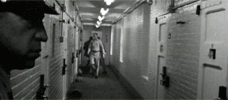
Titicut Follies
1967 -
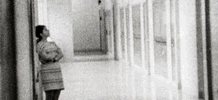
High School
1968 -

Law & Order
1969 -

Basic Training
1971 -
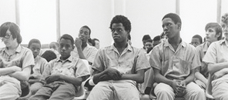
Juvenile Court
1972 -
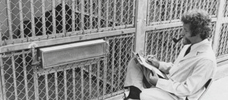
Primate
1974 -
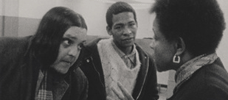
Welfare
1975 -
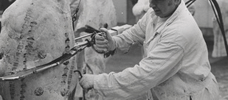
Meat
1976 -
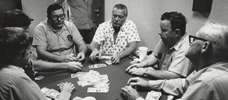
Sinai Field Mission
1978 -
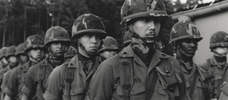
Manoeuvre
1979 -

Model
1980 -
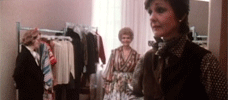
The Store
1983 -

Blind
USA -
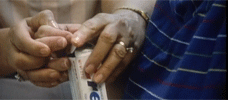
Adjustment & Work
1986 -

Missile
1987 -

Central Park
1989 -

Near Death
1989 -

Aspen
1991 -
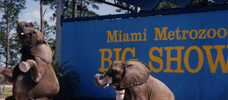
Zoo
1993 -

High School II
1994 -

Ballet
1995 -
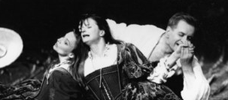
La Comédie-Française
1996 -
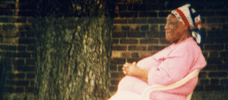
Public Housing
1997 -
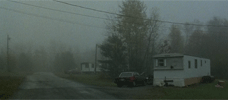
Belfast, Maine
1999 -
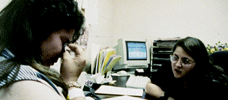
Domestic Violence / Domestic Violence 2
2001 / 2002 -
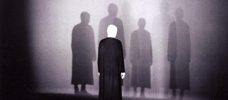
The Last Letter
2002 -

State Legislature
2006
We don’t do comments anymore, but you may contact us here or find us on Twitter or Facebook.



